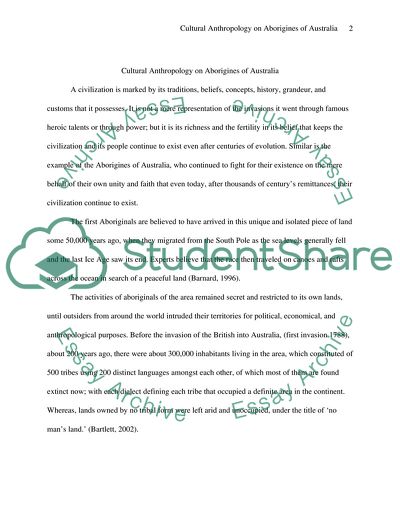Cite this document
(Cultural Anthropology on Aborigines of Australia Case Study, n.d.)
Cultural Anthropology on Aborigines of Australia Case Study. Retrieved from https://studentshare.org/anthropology/1556394-culture-anthropolgy-on-aborigines-of-australia
Cultural Anthropology on Aborigines of Australia Case Study. Retrieved from https://studentshare.org/anthropology/1556394-culture-anthropolgy-on-aborigines-of-australia
(Cultural Anthropology on Aborigines of Australia Case Study)
Cultural Anthropology on Aborigines of Australia Case Study. https://studentshare.org/anthropology/1556394-culture-anthropolgy-on-aborigines-of-australia.
Cultural Anthropology on Aborigines of Australia Case Study. https://studentshare.org/anthropology/1556394-culture-anthropolgy-on-aborigines-of-australia.
“Cultural Anthropology on Aborigines of Australia Case Study”. https://studentshare.org/anthropology/1556394-culture-anthropolgy-on-aborigines-of-australia.


